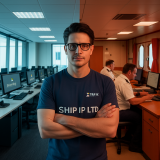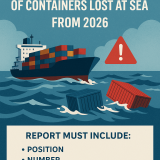The U.S. Navy accused a sailor of setting the 2020 fire on the USS Bonhomme Richard, but it refuses to release records in the case as the law requires.
Despite a 2016 law requiring more transparency of court-martials, the U.S. Navy is refusing to release nearly all court documents in a high-profile case in which a sailor faces life in prison.
Seaman Recruit Ryan Mays, 21, has been charged with aggravated arson and hazarding a vessel in the 2020 fire that destroyed the USS Bonhomme Richard. Mays has maintained his innocence.
On July 12, 2020, a fire started on the amphibious assault ship as it was moored at Naval Base San Diego and raged for more than four days. The Navy was not able to put the fire out until the ship was so badly damaged that the service had to scrap it, a more than $1 billion loss.
Although the Navy has accused Mays of starting the fire, the service’s eight-month investigation found plenty of blame to go around. A more than 400-page report concluded that leaders, from those on board the Bonhomme Richard all the way to a three-star admiral, had failed to ensure the ship’s safety and allowed it to become a fire hazard. Fire response was also grossly mismanaged by leaders who had little understanding of how it should have worked, the Navy’s investigation found. Top Navy leaders called the dayslong blaze preventable and unacceptable.
Last week, the military judge in Mays’ case denied requests made separately by the defense and ProPublica to make the records public. Cmdr. Derek Butler sidestepped the defense’s claims — that the government was violating Mays’ Sixth Amendment right to a public trial — and ProPublica’s assertions of the First Amendment. Butler didn’t address the constitutional issues at hand and instead said he didn’t have the authority to release the records.
In July, ProPublica had first requested from the Navy’s Office of the Judge Advocate General all court records that have already been filed and discussed extensively in open court in the Mays case. That office denied access to all but two records already made public, refusing to release any more until the court-martial concludes — and only if Mays is found guilty. The court-martial is scheduled to begin Sept. 19.
In August, ProPublica, along with Paul LeBlanc, a retired Navy judge and lawyer, filed a motion asking Butler to release the documents, arguing that the First Amendment requires the government to make the records public. ProPublica also argued that the public has a strong interest in understanding how and why the government is prosecuting Mays and in ensuring he receives a fair trial.
“They’re attempting to put someone in prison for a very long time, and what they’re filing is hidden from the people,” LeBlanc said. “These documents are filed on behalf of the people of the United States, and the people of the United States should have the same right to see them and know what the government is doing on their behalf as they do in federal court.”
“How can anybody have any sort of trust and confidence in a system if it won’t let them read what prosecutors are saying on their behalf?”
In 2016, Congress passed a law requiring the military to make court-martial dockets, records and filings accessible to the public. The law was prompted in part by the military’s lack of transparency in sexual assault cases. Congress’ goal was to make court-martial records as available to the public as federal court records are.
The law specifically states that the military should facilitate access during “pretrial, trial, post-trial, and appellate processes.” But the Department of the Defense has decided that the law only applies once a court-martial is over. It is simply too hard to turn court-martial records over to the public while a trial is happening, Capt. Jason Jones, the prosecutor in the Mays case, wrote in his brief asking the judge to deny records to the public. Military courts don’t have a clerk to coordinate records, and unlike civilian courts, which are in one place, military courts have to operate in a fluid environment, such as a war zone, he said.
Butler also cited the 2016 law aimed at increasing transparency as why he didn’t have authority to release the records. He wrote that the law did not explicitly grant courts the power to release records but rather the secretary of the defense. He did not address ProPublica’s argument that he has the authority and obligation to release the records under the First Amendment, which Congress cannot take away.
ProPublica Deputy General Counsel Sarah Matthews said the news organization disagreed with Butler’s interpretation of the law and would next ask the top lawyer for the Department of Defense, Caroline Krass, to clarify what the law requires the services do.
The federal government has released the charge sheet and a search warrant that detailed the Navy’s case against Mays. By withholding all other records, including those favorable to the defense, the Navy is seeking to “shield the record in secrecy to its advantage,” Matthews wrote in the motion to Butler.
“Records like these are open in every other courtroom in America. These records aren’t sealed or restricted. They have been discussed in open court, in a proceeding that could send a man to prison,” Matthews said separately. “The Navy believes it can arbitrarily delay or even deny access completely to these records, something all the more troubling because Congress has passed a law demanding more, not less, transparency from our armed services in cases like this.”
Source: https://www.marinelink.com/news/us-navy-withholding-court-records-499384








